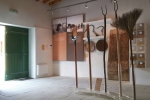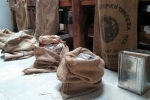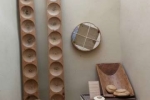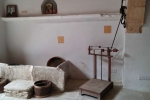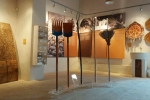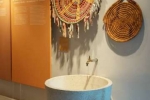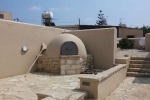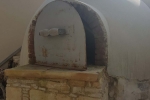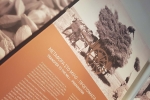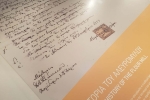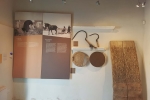Preserved Buildings
Revival of the Architectural Heritage
The traditional center of Athienou preserves the original characteristics of the Architectural Heritage of ‘‘Mesaoria’’.
The preservation and revival policy of the traditional center and more widely of the whole municipal area has always been a key objective of the Municipality of Athienou despite all the interventions, the latest additions and the wearing off over time.
Many buildings are characterized for their architectural, historical and social value, which are gradually being upgraded through a comprehensive and coordinated effort to maintain and correct the architectural integration of the newer buildings.
The Municipality of Athienou with the main objective to implement a conservation and revival policy for the traditional center and the wider area in the period 2001 – 2010 proceeded with the purchase of buildings with remarkable and significant architectural and historic value, in order to transform them into ‘’preserved’’ buildings highlighting the traditional local architectural heritage and culture.
Restoration - Maintenance (Family House of Monk Kallinikos Stavrovouniotis) and the old cheese and dairy factory
The project has been approved as a co-funded project by the Rural Development Program 2007 – 2013 Measure 3.1: Encouragement of Touristic Activities and Promotion of the Cultural Heritage (Category of Action) Thematic or Local Regional Museums.
Responsible for the monitoring, coordination and overall management of the project was the Larnaca District Administration. The restoration costs amounted to €540.000. Specifically, 80% of the cost was covered by the Rural Development Program and 20% by the Municipality of Athienou.
Designers of the project were 2 offices which collaborated: Karin Georgiadou and Nearchos Klerides.
Historic information and modern use
The building complex belonged to the family of Petros and Florentia (Flourentzou) Mammous. The couple lived in this house with their five children Helen, Giannis, Costas (later known as monk Kallinikos Stavrovouniotis) Kyriakos and George during the 20th century. Petros Mammous was a merchant and cheesemaker. Thus in the building complex apart from the house, the family also operated a grocery store and a cheese and dairy factory.
The house consisted of a basement with the sunlit space, an office, dining room and kitchen and the upper floor with two bedrooms and the living room. The house had an interior courtyard and a barn, used for harboring pigs. In the courtyard, they had a water pump, pits and grooves leading out into the street which served the operations of the cheese and dairy factory.
The cheese and dairy factory was operated by the whole family who worked there. They were producing dairy products, butter and groats (pourgouri).
The house was inhabited until 1974.
In mid-2008, the Foundation of Monk Kallinikos and the Municipality of Athienou signed a long-term lease agreement of the building with the goal of restoring and converting it to a museum, including in its uses an exhibition space and a space for lectures or seminars for cultural, artistic and religious activities, in order to preserve the memory of the great benefactor Monk Kallinikos Stavrovouniotis and the Byzantine art that he tirelessly served. So, part of the house was shaped as the hagiography workshop of Monk Kallinikos. On the upper floor one can see the traditional way houses used to be. In the area of the grocery store art workshops are organized. The traditional cheese and dairy factory is fully restored, using it as a representation of the traditional way of producing cheese and curd (yogurt) in Athienou.
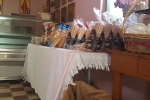

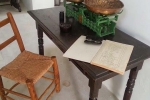
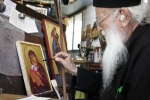

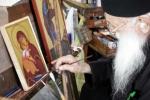

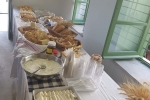
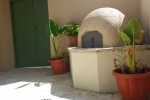

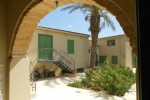

House of Giorkis and Fotini Pougerasi
The house of Giorkis and Fotini Pougerasi belonged to the sisters Maroulla Toumazos, Soulla Pantelaki, Androulla Anastasiou and Ismini Sofroniou children of Giorkis and Fotini Pougerasi which was purchased by the Municipality of Athienou in 2003 with the Mayor’s initiative, Mr.Gavriel Kazazis and approved as a decision by the Municipal Council for the amount of CYP36.000 (€61.500). The purchasing of this traditional mansion was within the framework of the Municipality to implement a policy of conservation and revival of its traditional center and the wider region with the purpose of converting to preserved buildings, highlighting the traditional local architectural heritage and culture.
The building has a lordly character and it is situated in the traditional center, successfully combining characteristics of the urban and rural life of the country.
Except from being the family house of Giorkis and Fotini Pougerasi, it was also used as a traditional coffee shop, the neighborhood grocery store, and the main liquor store.
The building has been restored to its original form and converted into an agrotouristic complex consisting of five studio rooms with incorporated bathrooms. The traditional coffee shop is used as a dining space with a common to all internal courtyard.
The project was approved as urban, and its supervision and coordination was undertaken by the Department of Town and House Planning for the contract amount of €517.000 + VAT. Regarding the funding, 80% of the cost was covered by the State and 20% by the Municipality of Athienou.
Designer of the project was the architectural firm Elli Konstantinidou with her team and contractor the consortium “Fakas Constructions & Development Ltd & A. Antoniou & Sons (Building Construction) Ltd”.
Usage
The Municipal Council promoted in 2017 the use of the building as an agrotouristic accommodation and restaurant, after a request for proposals from interested parties in Athienou. The building already operates as such, housing “ATHIENO” (https://el-gr.facebook.com/Athieno.Diatiriteo/).

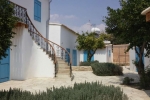

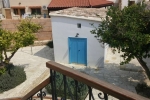
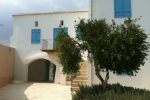
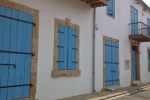
Maintenance - Restoration of the Traditional Flourmill
The project Maintenance – Restoration of the traditional flourmill had been approved as a Co-funded Project by the Rural Development Program 2007 – 2013 Measure 3.2: Conservation – Restoration and Enhancement of the Cultural Heritage and Natural Resources.
The Department of Town Planning and Housing has undertaken the coordination and implementation of the project for the Contract amount: € 386.180 + VAT. The Municipal contribution has been limited to 20% of total cost.
Designers of the project are the collaborating agencies of Karin Georgiadou & Nearchos Klerides with their team consisting of Architects Engineers Karin Georgiadou & Nearchos Clerides, the civil engineer Aris Outizian, the quantity surveyor Mrs. Charoulla Mouzouri and electromechanical engineers Alekos Mouzouris and Associates.
Contractor of the project was the consortium Fakas Constructions & Development Ltd & A. Antoniou & Sons Ltd Building Contractors.
Historical information
The flourmill functioned with a steam engine which consumed as fuel wood or slate pencil. In the early 1920s the sole owner of the mill was Michalis Chatzitheocharous who in 1930 replaced the steam engine with a diesel engine. In 1934 he hired his son Andreas as his assistant who persuaded him to increase production by switching to a more powerful diesel engine that would simultaneously run three mills of which two would grind wheat and one barley, vetch, bitter vetch, split pea, and salt. They also had a smaller mill specifically used for groats.
In the early stages alongside with the flourmill operated a small coffee shop which was frequently visited by dignitaries and the at the time ‘‘high society’’ of Athienou, meeting to discuss any problems the village was facing. It has been said that this was the place where the decision to create the COOP Bank of Athienou was taken. Something also worth mentioning is that the fellow villagers of the owner trusted his good judgment and often used him to resolve disputes. This was the reason that gave him the nickname ‘‘KAIAFOS’’ originating from the famous “Kaiafas” and the reason that today the flour mill has the name KAIAFOS FLOURMILL. Since 1940 the management of the flourmill passed on to Andreas Chatzitheocharous.
By the year 1974, with its biggest development being the decade from 1960 to 1970 during which time the flourmill served in addition to Athienou the neighboring villages of Petrofani, Pyroi, Tymbou, Geri, Melousia, Agia, Tremetousia, Arsos and Troulloi. After 1970 its flourish began to decline as fewer women continued baking in their homes.
The increased production of ready-made bread as well as the increased demand for flour led the owners of commercial bakeries buying flour from large mills. After 1974 its operations were limited to milling barley for animal feed and production of very small amounts of wheat. In 1990 with the establishment of fodder factories from SPE (Department of the Coop Bank of Athienou) and private mills for producing groats the flourmill was forced to suspend its operations. In 2000 Andreas Chatzitheocharous sold the mill to Alkis Kepolas and in 2004 the Municipal Authorities of Athienou bought it for CYP28.000 (€47,000) to exploit it for touristic purposes.
A second flour mill that operated in Athienou using slate pencil and wood belonged to Stavros Stavridis from the village of Dali. This mill was forced to dissolve operations when a third mill began operations which belonged to Gregoris Papalexi. In 1931 Costas Stavridis son Stavros Stavridis set up a new diesel mill in the ‘‘Gastra’’ area in the house that belonged to Athanasis Michaelides that later came to the possession of Anastasis St. Mestanas. Some years later they transferred the mill to Evagorou Street, near Mestana’s Inn. Over the years, its owners changed including Giannis Koumides, Nicholas Koumides and Nikos Vyzakos. Its last owner was Kostas Stavroullis Chatzichristofis who bought the mill in1966 and turned it into an electric one. Up to date the mill is still occasionally working to produce groats, lentils, bitter vetch, vetch, chickpeas.
Mr. Yiannis Lambrou and the son of the unforgettable Andreas Chatzitheocharous, Michalis, provided most of the above information.
